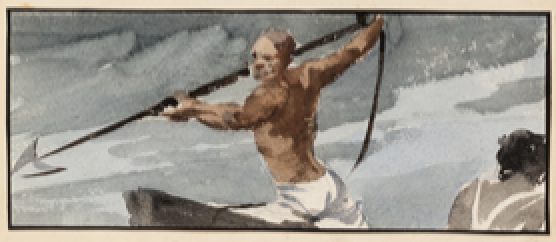Storyboarding Moby Dick
Stephen B. Grimes, Huston’s Assistant Art Director on the 1956 adaptation of Moby-Dick, created the movie’s storyboard. Storyboards represent a particularly important inter-semiotic mediation in the film-making process because they are the first visualization of the screenplay. A storyboard is composed of a series of sketches that outline the narrative sequence of a film before it is shot. In some cases, it follows a scene shot-by-shot and is a guide for the director and the cinematographer. When compared to the final cut of Bradbury and Huston’s film, Grimes’s storyboarding can establish the degree of influence Grimes exerted on the film’s mise-en-scène. “Storyboarding Moby-Dick,” a MEL project that explores Grimes’s creative input into the 1956 film addresses a number of questions. How did the artist’s drawing style affect other elements of the film? What differences exist between the storyboard’s projection of the narrative sequence with regards to the novel, the screenplay, and the film? What are the implications of these differences? How does Grimes’s visual interpretation of the novel shape an already complicated network of versions layered on to the film? What does his appropriation of industrial common practices for storyboarding say about his artistic vision in relation to the ideological implications of the classic Hollywood production system? How is his work to be assessed in light of this system?
In search for answers to these and other questions, MEL editors will collate Grimes’s storyboards with Melville’s novel, the numerous versions of Bradbury’s screenplays, and Huston’s final cut. The storyboard materials scholars will be working with are 38 watercolors (23 cm x 9.5 cm) and double-strip photographs of the nearly complete storyboard (11.75 cm x 9.25 cm). Watercolors are double tiered in formation and contain, in some cases strips of text taken from one of the screenplay versions used on set after Bradbury had left the production.
To see samples of the Grimes Storyboard, click on the link in the right column.
